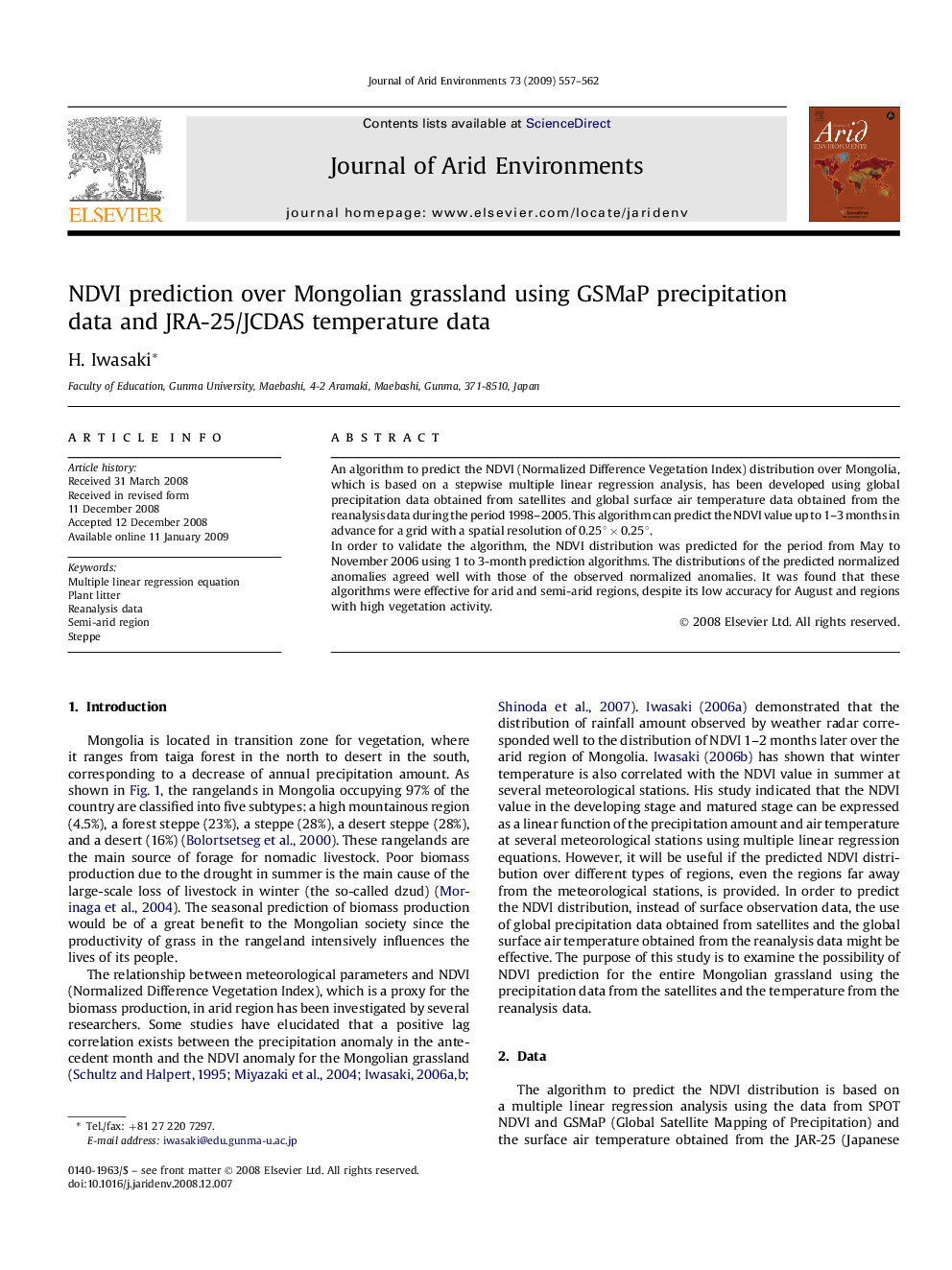| Article ID | Journal | Published Year | Pages | File Type |
|---|---|---|---|---|
| 4393965 | Journal of Arid Environments | 2009 | 6 Pages |
An algorithm to predict the NDVI (Normalized Difference Vegetation Index) distribution over Mongolia, which is based on a stepwise multiple linear regression analysis, has been developed using global precipitation data obtained from satellites and global surface air temperature data obtained from the reanalysis data during the period 1998–2005. This algorithm can predict the NDVI value up to 1–3 months in advance for a grid with a spatial resolution of 0.25° × 0.25°.In order to validate the algorithm, the NDVI distribution was predicted for the period from May to November 2006 using 1 to 3-month prediction algorithms. The distributions of the predicted normalized anomalies agreed well with those of the observed normalized anomalies. It was found that these algorithms were effective for arid and semi-arid regions, despite its low accuracy for August and regions with high vegetation activity.
